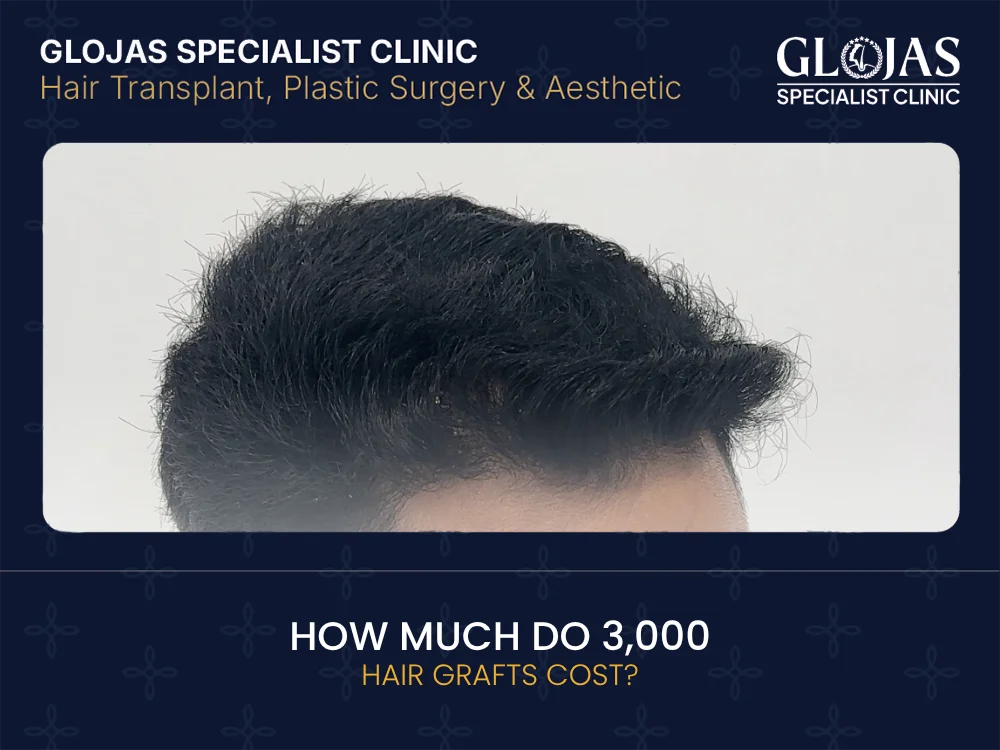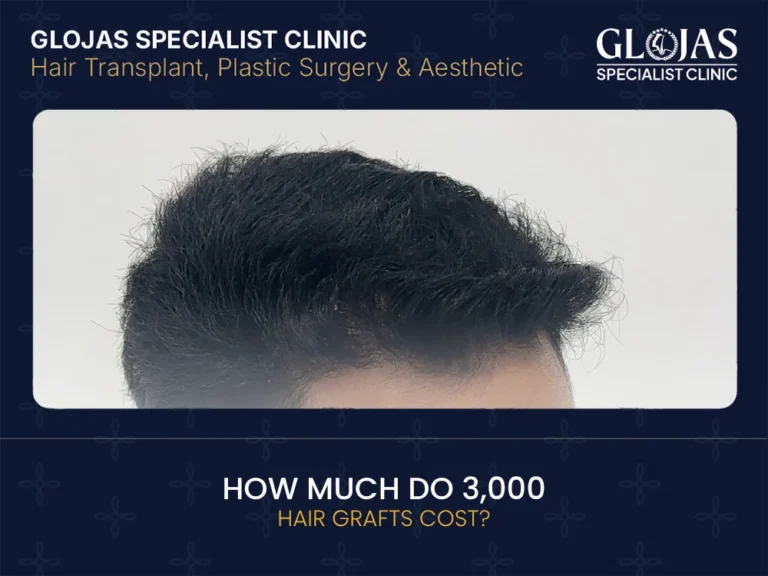If you’re considering a hair transplant, one of the first questions is: how much does 3,000 hair grafts cost? In this article we’ll break down the expected pricing, the factors that influence cost, approximate regional ranges, and what you should watch out for. This is for informational intent — to help you be more informed when discussing with clinics or specialists.
What is “hair grafts cost”?
The term “hair grafts cost” refers to the price per graft (a graft being a cluster of hair follicles) for a hair transplantation procedure. Clinics often quote a cost per graft or per hair depending on their billing model. Multiply that by how many grafts you need (here, 3,000) plus additional fees, and you get the total procedure cost.
Typical 3,000 hair grafts cost range
When you ask “how much do 3,000 hair grafts cost?”, there is no single universal answer. The cost depends heavily on the country, clinic standard, surgeon’s reputation, the technique used (FUE, FUT, DHI, robotic, etc.), and extra services. But here are ranges to give you a ballpark:
- In Malaysia, as an example, some clinics list 3,000 grafts costing between RM 12,000 and RM 20,000.
- Some local pricing breakdowns show RM 6 per graft when the volume is large, which would put 3,000 grafts at around RM 18,000 in some clinics.
- In Malaysia overall, graft pricing for FUE is often said to range RM 6 to RM 12 per graft.
- In other countries, hair transplant cost ranges are much broader. In the U.S., a full hair transplant often ranges $4,000 to $15,000 depending on how many grafts are done.
- Globally, cost per graft in leading clinics often ranges from a few USD to higher, depending on region.
So, using Malaysia as our illustrative base (because you are in Malaysia), you might expect 3,000 grafts to cost somewhere between RM 12,000 to RM 20,000 (or more, depending on add-ons). In other countries, equivalent grafts might cost more due to labor, overhead, and technology fees.

Factors influencing hair grafts cost
Why is there such variation in hair grafts cost? Below are the key variables that clinics consider:
Factor | How it affects cost |
Technique (FUE / FUT / DHI / robotic) | More advanced or labor-intensive methods (like robotic FUE or DHI) often command higher rates. |
Surgeon’s expertise & reputation | Highly experienced, ABHRS / ISHRS-certified surgeons can charge premium fees. |
Clinic location & overhead | Clinics in major cities or premium districts cost more because of rent, staff, and equipment. |
Density goals & area size | If you ask for dense packing or a wide area, more precise work is needed and that can increase pricing. |
Post-operative care / follow-up / medications | Some clinics bundle follow-up, meds, PRP, or extra sessions into the package; others charge separately. |
Donor area condition | If your donor area is weak or sparse, extra care or harvesting from body hair might be needed — raising costs. |
Technology / equipment | Use of state-of-the-art tools (robotics, micromotors, magnification, etc.) increases cost. |
Sample pricing scenarios for 3,000 hair grafts cost
Let’s run through a few hypothetical scenarios to give you a feel:
Scenario | Price per graft | Estimated total cost | Notes |
Basic FUE in a modest clinic | RM 6 | RM 18,000 | Minimal extras, standard tools |
Mid-tier clinic with good surgeon | RM 8 | RM 24,000 | Better equipment, some follow-up care included |
Premium / high-end clinic | RM 10 | RM 30,000 | Includes extras like PRP, premium post-op care, superior surgeon |
Overseas clinic with lower labor costs | USD 2 per graft ≈ RM 9 | RM 27,000 | But factor in travel, lodging, aftercare |
These are illustrative — actual quotes may differ.
What you should ask your clinic / specialist
Before committing, ask:
- Is the cost quoted “all inclusive” (surgeon, meds, follow-up) or just hair grafts cost?
- Which technique exactly (FUE / DHI / robotic)?
- What is the surgeon’s certification (e.g. ABHRS / ISHRS)?
- What is the survival rate / guarantee of grafts?
- Are post-op consultations and touch-ups included?
- What is the experience of that surgeon with high-graft sessions?
- Can I see before/after results from 3,000 grafts from that clinic?
- What is the donor area strategy?
- What is the schedule for growth and expected number of sessions?
- What happens if some grafts don’t survive — any fallback / warranty?
Is 3,000 grafts enough?
Yes, for many moderate hair loss cases, 3,000 grafts can achieve substantial coverage. It depends on your baldness pattern, recipient area size, hair caliber, scalp laxity, and density goals. In some larger areas, more grafts may be needed.
Risks, recovery & additional hair grafts cost to consider
- There might be shock loss (temporary shedding) in adjacent hairs post-op.
- Some grafts may not survive — “take rate” varies by surgeon skill and aftercare.
- Minor side effects include redness, swelling, scabbing.
- Medications, PRP, or further touch-up sessions may cost extra.
- Travel, lodging, downtime (if you’re going abroad) add to your cost.
- Long-term, your native hairs may continue to thin, so future touch-ups may be needed.
Why choosing the right clinic matters more than the lowest price
While it’s completely natural to consider cost when planning a hair transplant, focusing solely on the cheapest deal can be a serious mistake. Hair restoration is both a medical procedure and an art form—it requires skill, precision, and aesthetic understanding. Opting for a clinic just because it’s inexpensive can lead to disappointing or even harmful results that may cost far more to fix later.
A poorly executed hair transplant can leave lasting marks—literally. Visible scarring, patchy or uneven hair growth, and unnatural-looking hairlines are common outcomes when inexperienced or unqualified practitioners perform the surgery. Unfortunately, these results not only affect your appearance but also your confidence and the possibility of future corrective procedures.
That’s why choosing the right clinic is far more important than finding the lowest price. Here’s what you should always prioritize when evaluating your options:
Surgeon Credentials: Ensure your surgeon is board-certified and recognized by reputable organizations such as the American Board of Hair Restoration Surgery (ABHRS) or the International Society of Hair Restoration Surgery (ISHRS). These certifications reflect rigorous training, ethical standards, and proven competence.
Experience in High-Graft Cases: A skilled surgeon with a strong track record in complex, high-graft procedures can ensure better density, precision, and a natural-looking outcome. Experience directly correlates with quality results.
Verified Before-and-After Photos: Always ask to see real patient results, preferably those that closely resemble your hair type and hair loss pattern. Authentic, high-resolution photos are evidence of consistent, reliable outcomes.
Transparent Pricing: A reputable clinic will provide clear, upfront costs without hidden fees. Transparency builds trust and helps you make an informed decision without surprises down the road.
Postoperative Support & Warranty: Hair transplant success doesn’t end once the surgery is over. Postoperative care is crucial for proper healing and growth. Look for clinics that offer detailed aftercare instructions, follow-up consultations, and even warranties for graft survival or touch-ups if necessary.
Ultimately, a high-quality hair transplant is an investment in yourself. When done right, the confidence boost and long-lasting, natural results will make every penny spent feel worthwhile. Choosing the right clinic ensures not only safety and satisfaction but also peace of mind knowing your transformation is in expert hands.
Why GLOJAS Specialist Clinic is a trusted choice
At GLOJAS Specialist Clinic, our team has over 25 years of expertise in hair transplantation, and we are both ABHRS- and ISHRS-certified. We offer transparent graft pricing, personalized plans, and strong post-op support to ensure your 3,000 grafts deliver the best possible outcome. If you’d like a tailored quote or consultation, feel free to reach out to us.
FAQs (10 common questions)
- What is the average cost per graft?
It depends on location and clinic, but in Malaysia it is often around RM 6 to RM 12 per graft for FUE. - Does using DHI hair grafts cost more than FUE?
Yes — DHI (direct hair implantation) typically commands a premium due to its more delicate and labor-intensive method. - Do I pay per graft only or total package?
Some clinics quote per graft only; others include medications, follow-up, and touch-ups. Always confirm what’s included. - Will all transplanted grafts survive?
Not always — survival (take rate) can vary. Good surgeons aim for 90–95% survival under ideal conditions. - Is it cheaper abroad?
In some countries labor and overhead are lower, but travel, lodging, and post-op care may offset savings. - How many sessions for 3,000 grafts?
Usually one session is enough for 3,000 grafts, but sometimes clinics split into multiple days depending on your scalp and donor area. - When will I see results?
Transplanted hair often sheds first, then begins to regrow by 3-4 months, with significant growth by 6–9 months. - Will I need medications or PRP afterward?
Many clinics recommend adjuvant therapy (e.g. minoxidil, PRP) to improve graft survival and native hair health. - Can I do 3,000 grafts at once safely?
Yes, in many cases. But donor area capacity and scalp laxity should be assessed — a good surgeon will evaluate if splitting is safer. - Is there a warranty or guarantee?
Some clinics offer guarantees (e.g. replanting if grafts fail), but always get that in writing and understand terms.
Final thoughts
Asking “how much do 3,000 hair grafts cost?” is smart. The most reasonable expectation in Malaysia is somewhere between RM 12,000 to RM 20,000, but this depends heavily on the clinic, surgeon, method, and extras. Don’t just compare prices — compare value, credentials, and aftercare.
If you’d like a free assessment or customized quote at a certified center, contact GLOJAS Specialist Clinic. With over 25 years of experience, and ABHRS & ISHRS certification, we can guide you through realistic expectations and results.
